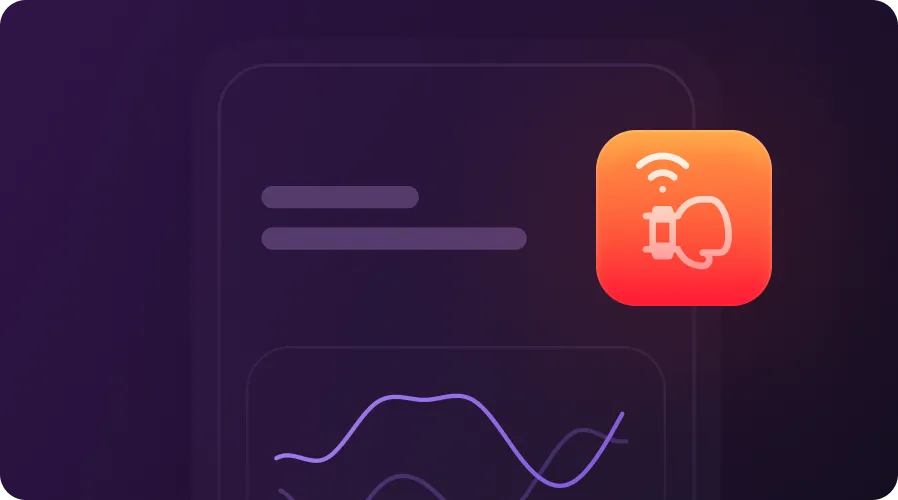The Internet of Medical Things (IoMT): True Milestone

The healthcare industry is an area that strongly needs innovations at all times. Diseases constantly evolve, and the care methods should go one step ahead. Infrastructure in healthcare and streamlined communication are not the last points in fostering positive swifts in this industry. These two elements, in conjunction, create favorable conditions for bringing innovations or merely positive changes. The more automation and advancements are introduced, the more effort can be devoted to curing and preventing diseases. That is why the Medical Internet of Things is so emphasized nowadays. Its role is impossible to overestimate, indeed.
Essence and Aim of the Internet of Medical Things (IoMT)
IoMT stands for a tech advancement that envisages the mutual coordination of various elements inside the health system, such as medtools, apps, and other arrays that facilitate steady and ongoing data circulation. The pillar objective of the IoMT is to foster and ease the non-stop collection, handling, transmitting, and sharing of the medinfo among the interested subjects. Most typically the latter ones are state authorities, hospitals, and other members of the healthcare industry.
Among the main deliverables that IoMT ensures are multiple options to track and manage the state of patients on a real-time basis. It also makes possible timely cure and disease prevention. Variable IoMT devices are already utilized for these purposes—health monitors, intelligent implants, remote diagnostic tools, and patient tracking systems, to mention a few.
How IoMT Works at a Glance
This tech approach is aimed at connecting multiple physical devices, including sensors and implants, through the Internet networks, most typically Wi-Fi. This endeavor is accomplished in order to grasp and transfer the most up-to-date info regarding the patient’s state.
IoMT also makes it feasible to collect a large scope of data and ascertain the outcomes of treatment as well as the tendencies of disease evolution. At a glance, the said technology is about multiple devices, software, informational systems, algorithms, and storage facilities. All of these elements are related to each other instantaneously and deliver error-free info about the things that fall under the survey.
Based on that info, medical personnel and other interested subjects highlight measures that have to be taken for the effectual care of the patients. IoMT is also in charge of elaborating on the list of actions that are needed to be accomplished to prevent similar cases from appearing in the future. Any information obtained during such an operation is extremely valuable and derives numerous benefits.
Benefits of IoMT
This tech advancement is definitely under the stage of its next development and upgrade. Therefore, the number of benefits may be higher in the short-term perspective. As of now, it is proven that IoMT guarantees these positive swifts across the industry:
- Bolstered efficacy of performance within a healthcare institution—the work of the medical personnel becomes more effective and coherent enabling quick decision-making which is especially crucial in emergency cases.
- Better and easier identification, including across multiple institutions—people don't need to input the same data many times. Once they have done that, it is transmitted through the internal channels of communication between the medinstitutions.
- Enhanced surveyance—IoMT software ensures timely and correct treatment as well as further post-medical support. The info is collected and processed steadily allowing the interested parties to make relevant conclusions regarding the efficacy of the chosen methods.
- Tackling diseases—collecting the info regarding the reasons why patients suffer from certain diseases enables scientists to elaborate on findings that are very precious for disease prevention. Most typically this is made by eliminating the conditions for such diseases to occur.
IoMT issues and challenges
On balance, the adoption of the considered tech advancement is associated with specific threats and risks:
- Coherent interaction of various medsystems—frequently, such medsystems have multiple peculiarities of operation since different independent producers develop them. Making all the integrated systems not only joint but also coherent may be quite challenging sometimes.
- Effective information management—this covers clinical data monitoring, storage, and processing. The outputs have to be accurate, relevant, and up-to-date.
- Secure data handling—since the info processed is very sensitive in nature, it requires more advanced measures to be implemented. Fairly saying, this type of data is very nourishing for cybercriminals. Still, encryption and specialized IoMT security software can substantially decrease, even eliminate at all, the risk of data leaks. The goal of ensuring robust data protection is required not from the ethical perspective solely—this is also a compulsory rule among the norms applicable within the industry.
- Alignment with the regulatory standards—the applicable legal rules are quite strict, taking into account the essence of services. To this end, a failure to comply with such often leads to severe fines and other sanctions, up to the liquidation of a medical institution. In addition, the applicable regulatory framework is frequently updated, resulting in the need to take other measures allowing to remain compliant.
What Prospects Does the IoMT Have?
IoMT in healthcare definitely opens wider perspectives, among others, thanks to the following tech advancements:
- AI&ML implementation—these two elements are equally good at bolstering analytics and personal care approaches. This can be achieved through automation in decision-making. Most common cases will not require excessive time to ensure correct treatment—these technological advancements, like AI platform for clinical diagnostics, will handle them quickly, efficiently, and at lower costs.
- Bolstering the quality of wearables and implants—upgraded serviceability and preciseness will deliver more faultless data regarding the patient’s state, particularly one’s life parameters. The advancement will also enable quick and more productive feedback in response to possible changes, especially adverse ones.
- Automated internal arrangements—monitoring the inventory and machines plays a pivotal role in ensuring the straightforward operation of any medinstitution. The less time medical personnel devote to routine assignments, the more time caregivers have for their visitors. Even more, optimized internal flows reduce associated costs drastically as well. The quality of medservices is not sacrificed but boosted under such terms.
- Utilizing big data benefits—IoMT ensures the effective and timely handling of large volumes of medical information for multiple purposes: tendencies, patterns, typical treatment outcomes, opportunities for innovations, etc.
- Quality and upgraded involvement methods—future IoMT will facilitate far more effectual involvement of patients and their awareness of the medcare applied. Informing, consent giving, and providing the updates will be made automatically and faultlessly, preventing any unreasonable delays or discrepancies.
- Effectual dealing across the healthcare sector and the remainder of the sectors concerned—IoMT architecture opens another room for diverse independent service providers, financial institutions, and state authorities to interact and exchange data with each other swiftly and straightforwardly. As a consequence, the interested subjects can drastically bolster their performance and the speed of decision-making.
Conclusion
The Internet of Things medical application is a powerful tool on the way to ensuring top-rated services within the industry and effective disease prevention in the future. It already offers multiple benefits, such as on-time and effective performance, multifunctional diagnostics, disease treatment and prevention, cost-effective operation, and, finally, more accurate forecasts. This tech advancement will undoubtedly bring even more opportunities in the short term since it is evolving steadily.
So, it was definitely a wise decision to incorporate such tech upgrades in a business yesterday. Now, they have already become compulsory things to have in possession. Our company is a reliable service provider experienced in custom medical software development. We will facilitate you to take the next step ahead by rendering top-notch services swiftly and at a reasonable cost. Enjoy the condensed expertise gained through the years.
FAQ
IoMT is a tech innovation that connects medical devices, software, and systems to collect, share, and analyze patient data in real time. This helps improve patient care and make healthcare services more efficient.
IoMT is crucial because it enhances the efficiency of healthcare services, improves patient outcomes, and helps in preventing diseases through better data collection and analysis.
AI and Machine Learning enhance IoMT by automating decision-making, improving diagnostics, and personalizing patient care, all while reducing costs and improving efficiency.
IoMT can reduce healthcare costs by automating routine tasks, improving medical staff efficiency, and preventing costly medical errors through real-time monitoring and data analysis.
Connect with us
.webp)
We are a tech partner that delivers ingenious digital solutions, engineering and vertical services for industry leaders powered by vetted talents.





